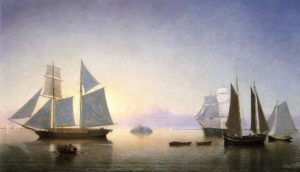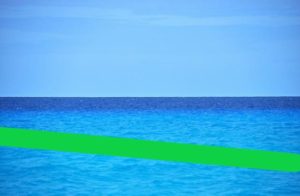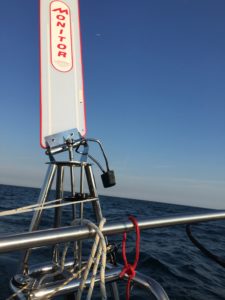In the Luderitz yacht club, we are approached by Guillaume (Giel) du Toit. He introduces himself as the custodian of the Seven Seas Project. The questionnaire he handed us, a long one, states that the Seven Seas Ldz Project is based in Luderitz and that there are three components to it. 1. Sustainable development 2. Socio-Economic development 3. Using the blue water sailing community to spread the word but also assist in transporting goods to remote Islands.
Giel is a retired engineer who has a dream that all islands, and we’re talking here mainly the pacific islands many thousands of miles away, become completely self-sufficient. Right now the project is a one-man show, and it’s mostly researching replacing items that need replenishment from the mainland, such as propane or butane, with things that can be locally replenished, such as biogas.
A few days later, I saw the research project on biogases for cooking and illumination in his backyard. A shelter that looks like a small greenhouse, two by one and a half meters, with no- see-through plastic walls, about a meter and a half high, with a large plastic bladder lying beside it. It needs about twelve kilos of organic waste daily, going down the chute at the front, to produce enough biogas for cooking and illumination for a family of four in a tiny house.
In the laboratory, a room in his house, he has a stove and a lamp, much like the Coleman varieties of stoves and lamps many of us have used on camping trips. The stove and lamp are working nicely, connected to the bladder in the garden.
But I’m getting ahead of myself. We just arrived at the Luderitz Yacht club, and we’re meeting Giel, born and bred in Luderitz, who hangs around the yacht club a lot and loves talking to international yachties. He is mentioned often in the club’s guestbooks, going back to the 1990s. Consistently favorable write-ups.
There are three international sailboats in town. Us, on Windsong, Tom and Emma, a French couple, and three crew on Karaka, a big steel boat Tom had purchased in Singapore as a derelict, now on their second circumnavigation. Their crew, two South Africans, one living in Australia, and one Swiss. Amandine and Fred, also French, on a 60-foot steel boat with their baby boy, Gustav, and their four-year-old daughter, Charlotte. One French crew, Nathan, and desperately in need of two more.
Giel suggests we’re going for a ‘braai ‘tomorrow. Seriously? We just met the guy! Plus, we don’t know half of the people on the other boats either. A braai is an Afrikaans word for barbecue, no gas allowed, only cooking on charcoal.
Alright, what do we need to bring? Nothing. Giel is looking after it all.
The following morning we assemble at the yacht club, and promptly at ten, Chiel shows up with two pickup trucks, himself driving one and the other driven by Morgan, one of the South Africans from Karaka. We pile into the crew cabs and the pickup beds. I can’t remember the last time I drove in the back of a pickup truck and into the desert we went.
About half an hour’s drive, starting on asphalt, but we soon found ourselves on dirt tracks. Sand dunes, rock formations, a mix of the two, all in all, a very inhospitable environment, but oh so beautiful. We ended up on a rocky shore, where a rock wall was piled up for a windbreaker with a built-in braai pit. Giel went to work, and we helped as much as he let us, but we mostly explored the area climbing over very sharp rocky outcroppings to the water.
Giel started a wood fire, and later, on the glowing ambers, he added charcoal, creating a heat source fit for a proper braai. Onions were sautéed, buns came out of the packages, and Giel’s homemade sausages were put on the fire. Due to my diet, I just had some buns with sautéed onions. However, the people raved about the sausages, grass-fed and organic. I haven’t seen a blade of grass yet in this country, but I’ll let that slide. All washed down with copious amounts of beer. Of course, also supplied by Giel.
After lunch and cleanup, we piled back in the pickups for some sightseeing. One for Jeff Foxworthy: You might be a redneck if you ever went off-roading in the back of a pickup truck in the Namibian desert while guzzling beer and holding on for dear life. So much fun.
We stopped at an abandoned whaling station where the remnants of the ovens for melting fat were still present. Steel cables had ground large grooves into a concrete slab protruding into the sea where the whales were pulled out. I later saw photos of this in the local museum, open five days a week, from 3:30 to 5:00 pm. You’d better be quick.
The next stop took us back to 1488, when Bartolomeo Diaz planted a cross on what is now called Diaz point. The original is in a museum, a replica in its place. The first explorer to go around the Cape of Good Hope.
Before returning to the yacht club, we stopped at Giel’s house to drop off the leftover braai items and some plastic bottles picked up along the way. Giel is that kind of guy. He then demonstrated the biogas research project.
Back at the yacht club at five, drinks all around. Two days later, Giel took us to a ghost town in the desert. An old diamond mining place. An industry still very much alive here in Namibia, just not there anymore.
Giel, what a guy. More than once, I shamefully asked myself what is in it for him, an ulterior motive, why is he doing all this? And the answer, I know now, is there isn’t an ulterior motive. There isn’t anything in it for him but the pleasure of giving. There are still some genuinely good and generous people in this world. Giel is one of them. He really made the Luderitz stop special for all of us.


